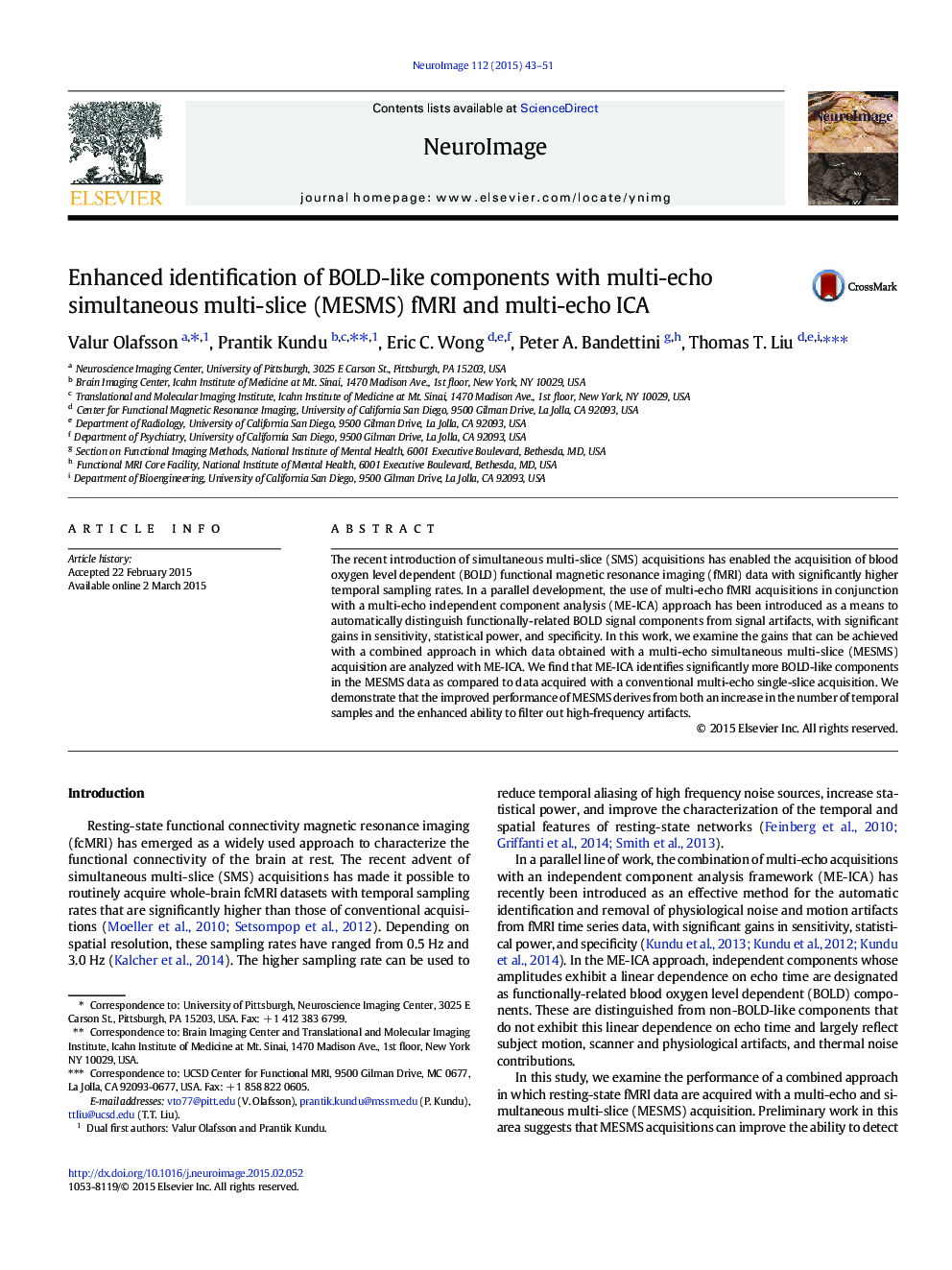| Article ID | Journal | Published Year | Pages | File Type |
|---|---|---|---|---|
| 6024933 | NeuroImage | 2015 | 9 Pages |
Abstract
The recent introduction of simultaneous multi-slice (SMS) acquisitions has enabled the acquisition of blood oxygen level dependent (BOLD) functional magnetic resonance imaging (fMRI) data with significantly higher temporal sampling rates. In a parallel development, the use of multi-echo fMRI acquisitions in conjunction with a multi-echo independent component analysis (ME-ICA) approach has been introduced as a means to automatically distinguish functionally-related BOLD signal components from signal artifacts, with significant gains in sensitivity, statistical power, and specificity. In this work, we examine the gains that can be achieved with a combined approach in which data obtained with a multi-echo simultaneous multi-slice (MESMS) acquisition are analyzed with ME-ICA. We find that ME-ICA identifies significantly more BOLD-like components in the MESMS data as compared to data acquired with a conventional multi-echo single-slice acquisition. We demonstrate that the improved performance of MESMS derives from both an increase in the number of temporal samples and the enhanced ability to filter out high-frequency artifacts.
Related Topics
Life Sciences
Neuroscience
Cognitive Neuroscience
Authors
Valur Olafsson, Prantik Kundu, Eric C. Wong, Peter A. Bandettini, Thomas T. Liu,
